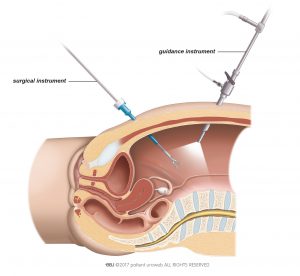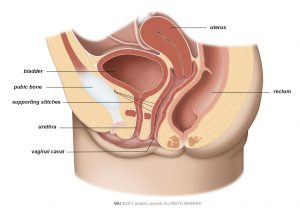Table of Contents
The aim of Burch colposuspension is to reposition the muscles that connect the bladder to the urethra (bladder neck). This helps them resist increases in abdominal pressure. This approach was widely used before midurethral slings were available. Slings have largely replaced colposuspension because they are easier to place and require a smaller operation.
When should I consider Burch colposuspension?
Burch colposuspension is a good treatment option if a midurethral sling cannot be used. It is also an option if previous surgery for stress urinary incontinence (SUI) didn’t work.
How is Burch colposuspension performed?
For Burch colposuspension, you will receive drugs to make you unconscious and insensitive to pain (general anaesthesia).
Steps:
- The bladder is emptied. Your doctor will insert a catheter to make sure that your bladder is completely empty during surgery.
- The surgical instruments are inserted. Burch colposuspension can be performed by open surgery or laparoscopic surgery:
- For open surgery the surgeon makes an incision in your lower abdomen to access the pelvic area directly.
- For laparoscopic surgery, the surgeon inserts small plastic tubes into your abdomen. Through these tubes the surgeon can insert the instruments needed to perform the surgery. One of the small tubes is used to insert a camera which allows the surgeon to see a high-quality image of the area on a video monitor.
- Laparoscopic and open surgery are equally effective to cure SUI in women. In general, hospital stay is shorter with laparoscopic surgery.
- The bladder neck is lifted. The side of the vagina is attached to the ligament behind the pubic bone with sutures so that the bladder neck lies in a hammock. This will lift and support your bladder neck.
How do I prepare for the procedure?
Before the surgery the doctor will ask for a urine sample to make sure you do not have a urinary tract infection. If you have an infection, your doctor will prescribe antibiotics before, during, and after the operation.
Your doctor will advise you in detail about how to prepare for the procedure. You must not eat, drink, or smoke for 6 hours before surgery to prepare for the anaesthesia. If you are taking any prescribed medication, discuss it with your doctor. You may need to stop taking it several days before surgery. Your doctor will advise you on when to start using it again.
After the procedure
How long will it take me to get back to my daily activities?
The doctor will generally remove the catheter immediately after the surgery and monitor your recovery. Usually, you can leave the hospital a few days after the procedure. If you have problems urinating or there is much residual urine in the bladder, you may have to stay longer. The recommended length of hospital stay varies in different countries.
Complete recovery from Burch colposuspension may take up to 6 weeks. During this time you could experience occasional pain in the pelvic area, or pain or a burning sensation when you urinate. Discuss with your doctor if you can get medication to deal with these symptoms.
Recommendations for 4-6 weeks after the surgery:
- Drink 1-2 litres every day, especially water
- Do not lift anything heavier than 5 kilograms
- Do not do any heavy exercise
- Take showers instead of baths
- Avoid thermal baths, or going to the sauna
- Adapt your diet to prevent constipation
- Avoid vaginal penetration
You need to go to your doctor or go back to the hospital right away if you:
- Develop a fever
- Are unable to urinate on your own
- Have heavy blood loss or pain
- Notice the wound starts to bleed or leak transparent fluid, or it hurts



